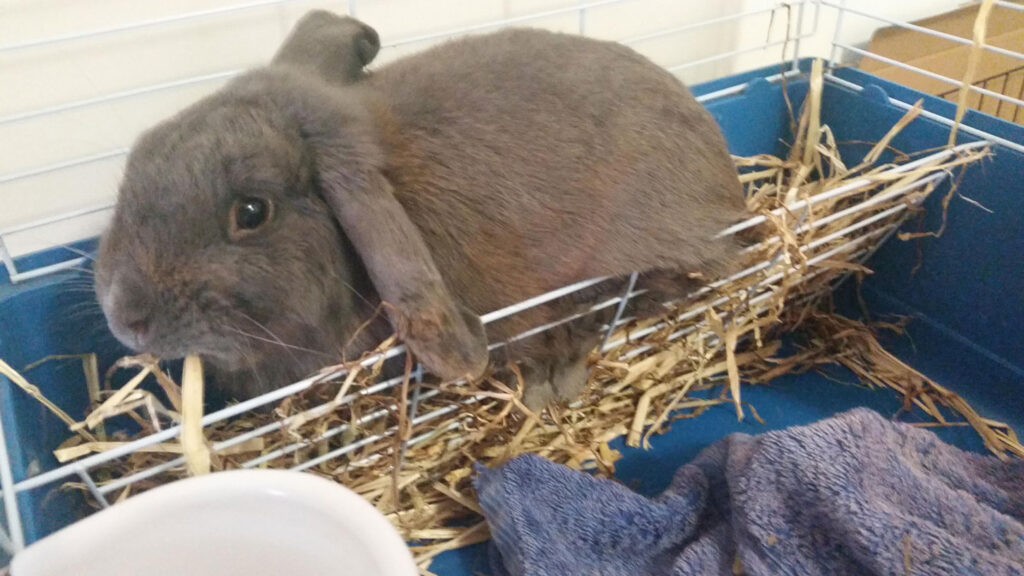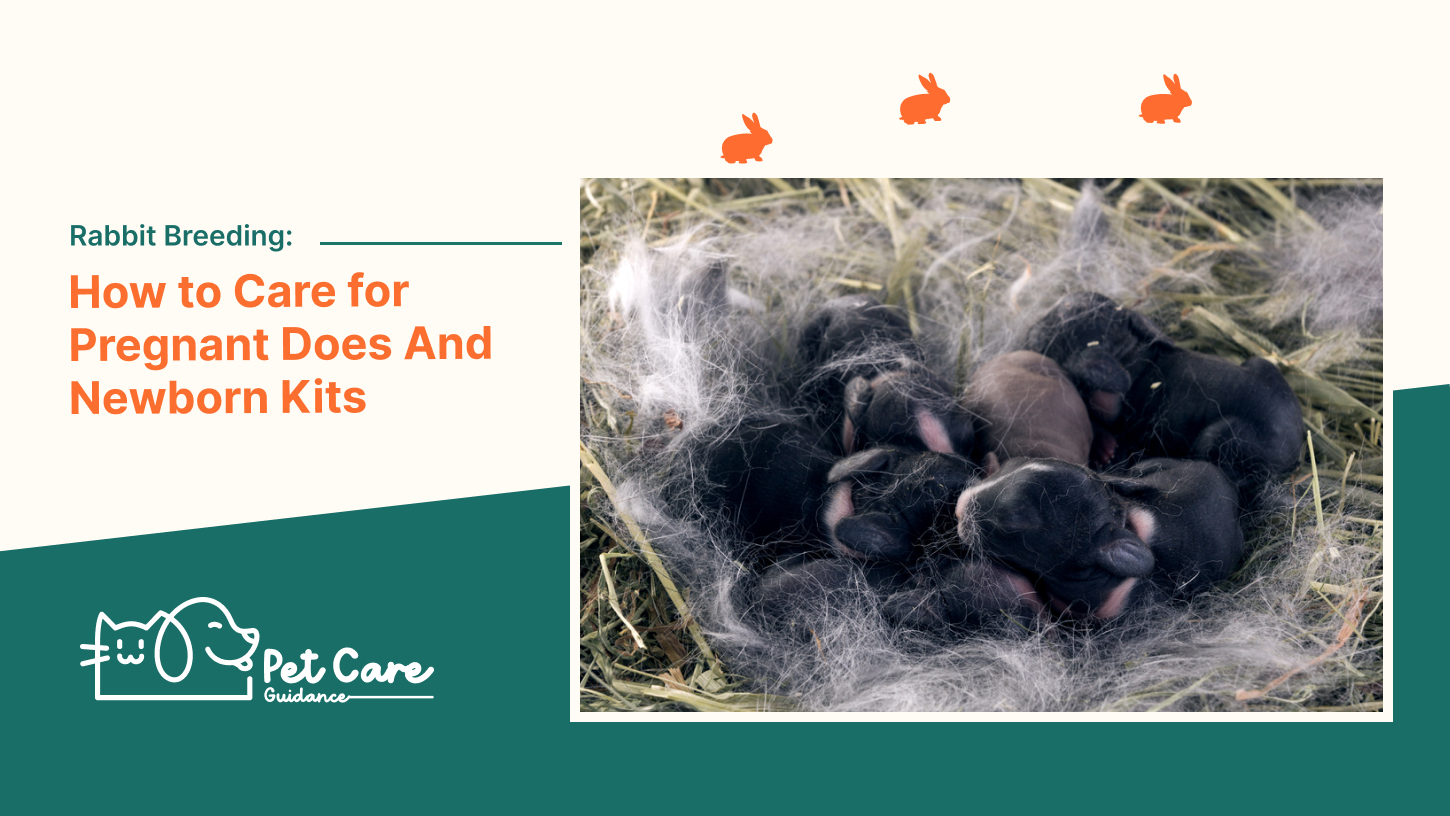To care for pregnant does and newborn kits, provide a warm and quiet nest with bunny fur or clean cotton wadding as lining. Avoid handling the newborn kits unless necessary and separate pregnant does from other rabbits to prevent aggression towards the kits.
It is important to keep the kittens and their mother in a calm and stress-free environment and to avoid attracting predators by keeping the mother away from the nest when not feeding. Additionally, ensure that the pregnant doe is comfortable, well-fed, and has a hay-filled nest box for delivery.
If any kits come out of the nest, gently put them back after stroking the mother rabbit to transfer her scent.
Creating The Best Nest For Newborn Kits
It is best to keep the newborn kits in a warm, quiet place in a nest. Bunny fur is the best lining for the nest, but clean cotton wadding will do as a substitute. Just be sure the babies do not get tangled in it. For heating, two or more babies usually are able to snuggle and keep each other warm if they have a good nest.
Rabbit mamas feed their babies twice per day and then leave them alone. This is normal and natural. If you have a group of rabbits being housed together, it is important to separate any does that you think might be pregnant. Other rabbits can potentially show aggression towards kits that aren’t their own.
Keeping the kittens and their mother in a calm, stress-free environment is important. It is also important to avoid handling newborn kits unless absolutely necessary. Once the kits begin to grow fur and become mobile, daily handling will help them.
Providing Adequate Heating For Newborn Kits
To provide adequate heating for newborn kits, it is best to keep them in a warm and quiet place in a nest. Bunny fur makes an excellent lining for the nest, but clean cotton wadding can be used as a substitute. It is important to ensure that the babies do not get tangled in the lining material. In most cases, two or more babies snuggling together are able to keep each other warm. However, if necessary, there are alternatives for heating the nest.
Some options include using a heating pad set on low or wrapping a warm water bottle in a towel and placing it in the nest. It is important to monitor the temperature closely and ensure that it is not too hot for the kits. By providing adequate heating, you can help ensure the health and well-being of the newborn kits during their early stages of development.
Understanding The Nursing Needs Of Neonatal Rabbit Kits
Rabbit mamas feed their babies only twice per day, and then leave them alone. This is normal and natural: in the wild, a mother rabbit not in the process of feeding her offspring stays as far away from the nest as possible to avoid attracting predators to her babies. It is best to keep the newborn kits in a warm and quiet place with a nest lined with bunny fur or clean cotton wadding.
The babies can snuggle and keep each other warm if they have a good nest. If you have a group of rabbits being housed together, it is important to separate any does that you think might be pregnant to avoid aggression towards the kits that aren’t their own.
It is also crucial to keep the kittens and their mother in a calm and stress-free environment. Handling newborn kits should be avoided unless necessary, but daily handling can begin once the kits grow fur and become more mobile.

Separating Pregnant Rabbits From The Group
To ensure the well-being of pregnant does and newborn kits, it is essential to separate the pregnant rabbits from the group. One of the reasons for this separation is to prevent aggression from other rabbits towards kits that aren’t their own. Rabbits can be territorial, and allowing them to stay together during this delicate period can lead to potential harm to the newborns.
Additionally, a calm and stress-free environment is crucial for the health of pregnant rabbits. By separating them from the group, you can create a peaceful space where they can feel safe and comfortable. Providing the right environment is essential for the well-being of both the mother and her kits.
Limiting Handling Of Newborn Kits
|
When it comes to newborn kits, it is important to avoid handling them unless absolutely necessary. The first few days after birth are critical for their development, and excessive handling can cause stress and potential harm. Rabbit mamas naturally only feed their babies twice per day and then leave them alone.
|
Frequently Asked Questions For Rabbit Breeding: How To Care For Pregnant Does And Newborn Kits
How Do You Take Care Of A Newborn Rabbit Kit?
To take care of a newborn rabbit kit, keep them in a warm, quiet place with a nest lined with bunny fur or clean cotton wadding. Make sure they don’t get tangled. They can keep each other warm if there are two or more babies.
Avoid handling them unless necessary.
How Frequently Do Neonatal Rabbits Kits Need To Nurse?
Neonatal rabbit kits need to nurse twice per day. Their mothers feed them and then leave them alone to avoid attracting predators.
How Do You Take Care Of A Pregnant Rabbit?
To take care of a pregnant rabbit, create a warm and quiet nest with bunny fur or clean cotton wadding. Avoid handling the newborn kits unless necessary, and keep the mother and kittens in a calm, stress-free environment. Separate pregnant does from other rabbits to prevent aggression.
Do I Need To Separate My Rabbits If One Is Pregnant?
If you have a group of rabbits together, separate any pregnant does to prevent aggression towards the kits. Keep the pregnant rabbit in a calm environment. Avoid handling newborn kits unless necessary. Provide a warm nest and proper care for the newborns.
It’s important to follow these guidelines.
Conclusion
To properly care for pregnant does and newborn kits, it is crucial to provide a warm and quiet environment for the babies. Use bunny fur or clean cotton wadding as nesting material, ensuring the babies don’t get tangled. A mother rabbit will feed her kits only twice a day and then leave them alone, mimicking their natural instincts in the wild.
Avoid handling the newborn kits unless necessary and keep the mother and kittens in a calm, stress-free atmosphere. Following these guidelines will help ensure the well-being of your rabbit family.


